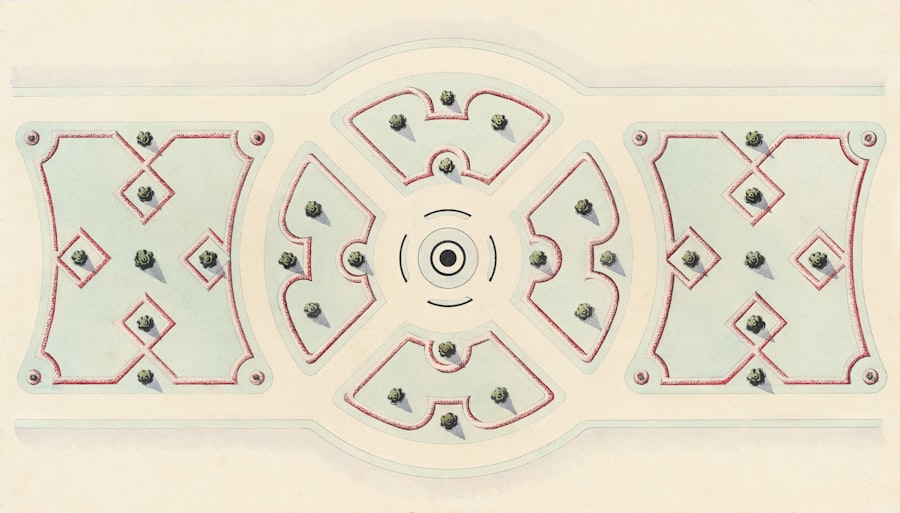Cache coherence refers to the consistency of data stored in local caches of a shared resource, particularly in multi-core or multi-processor systems. In such environments, each processor may have its own cache memory, which is used to store frequently accessed data to speed up processing. However, when multiple processors access and modify shared data, discrepancies can arise between the caches.
For instance, if one processor updates a value in its cache, other processors may still hold the old value in their caches, leading to inconsistencies. Cache coherence ensures that all processors have a consistent view of the data, thereby preventing errors and ensuring reliable operation. The concept of cache coherence is critical in modern computing architectures, especially as the number of cores in processors continues to increase.
With the rise of multi-core processors, maintaining coherence becomes increasingly complex due to the sheer volume of interactions between caches. Various protocols and mechanisms have been developed to address these challenges, ensuring that when one cache is updated, all other caches reflect this change in a timely manner. This is essential not only for correctness but also for optimizing performance in applications that rely heavily on shared data.
Key Takeaways
- Cache coherence ensures that all processors in a multi-processor system have a consistent view of memory
- Cache coherence is crucial for maintaining data integrity and avoiding inconsistencies in computer systems
- Types of cache coherence protocols include snooping-based, directory-based, and hybrid protocols
- Challenges in maintaining cache coherence include increased complexity, higher latency, and potential performance bottlenecks
- Cache coherence directly impacts system performance by affecting latency, throughput, and overall efficiency
The Importance of Cache Coherence in Computer Systems
Cache coherence plays a pivotal role in the performance and reliability of computer systems. In environments where multiple processors operate concurrently, the need for coherent caches becomes paramount. Without effective cache coherence mechanisms, systems can experience significant performance degradation due to increased latency and the potential for data corruption.
For example, consider a scenario where two processors are working on a shared dataset; if one processor modifies an entry while the other reads from its cache without awareness of the change, it may operate on stale data, leading to incorrect results.
Many modern applications are designed to take advantage of parallel processing capabilities, which often involve multiple threads accessing shared resources.
If these threads do not have a coherent view of the data, it can lead to race conditions and unpredictable behavior. This is particularly critical in real-time systems where timing and accuracy are essential. Thus, maintaining cache coherence not only enhances performance but also safeguards the integrity of computations across various applications.
Types of Cache Coherence Protocols

There are several types of cache coherence protocols designed to maintain consistency across caches in multi-processor systems. The most common categories include directory-based protocols and snooping protocols. Directory-based protocols maintain a centralized directory that keeps track of which caches have copies of a particular memory block.
When a processor wants to read or write to a memory location, it first consults the directory to determine the state of that memory block and whether it needs to communicate with other caches. This approach can be more scalable for larger systems since it reduces the amount of traffic generated by coherence messages. On the other hand, snooping protocols operate on a more decentralized model where each cache monitors (or “snoops” on) the bus or interconnect for transactions related to memory addresses it holds.
When a processor performs a read or write operation, all other caches check if they have a copy of that data and respond accordingly. This method can be simpler to implement but may lead to increased bus traffic as all caches must constantly monitor communications. Examples of snooping protocols include MESI (Modified, Exclusive, Shared, Invalid) and MOESI (Modified, Owner, Exclusive, Shared, Invalid), which define states for cache lines and dictate how caches should respond to various operations.
Challenges in Maintaining Cache Coherence
| Challenges in Maintaining Cache Coherence |
|---|
| 1. Data consistency |
| 2. Synchronization overhead |
| 3. Scalability issues |
| 4. Cache invalidation |
| 5. Performance degradation |
Maintaining cache coherence presents several challenges that can complicate system design and impact performance. One significant challenge is scalability; as the number of processors increases, the overhead associated with maintaining coherence can grow exponentially. In directory-based protocols, for instance, the directory itself can become a bottleneck if not designed efficiently.
Similarly, snooping protocols can lead to excessive bus traffic as more caches attempt to communicate their states and respond to requests. Another challenge arises from latency issues. In systems where multiple processors are accessing shared data simultaneously, delays can occur as coherence messages propagate through the system.
This latency can hinder performance, especially in applications that require rapid access to shared resources. Additionally, ensuring that all caches are updated promptly while minimizing the number of coherence messages sent can be a delicate balancing act. The design of effective cache coherence protocols must therefore consider both the frequency of updates and the potential for contention among processors.
Impact of Cache Coherence on System Performance
The impact of cache coherence on system performance is profound and multifaceted. Effective cache coherence mechanisms can significantly enhance throughput and reduce latency in multi-processor systems. For instance, when processors can quickly access up-to-date data without unnecessary delays caused by stale cache entries, overall system efficiency improves.
This is particularly evident in workloads that involve frequent read and write operations on shared data structures, such as databases or real-time simulations. Conversely, poor cache coherence strategies can lead to performance bottlenecks and increased latency. For example, if a snooping protocol generates excessive bus traffic due to constant state checks among caches, it can saturate the interconnect and slow down communication between processors.
Additionally, if coherence messages are not prioritized effectively, critical updates may be delayed, leading to situations where processors operate on outdated information. Therefore, optimizing cache coherence is essential for maximizing performance in modern computing environments.
Techniques for Ensuring Cache Coherence

Several techniques have been developed to ensure cache coherence in multi-processor systems effectively. One common approach is the use of invalidation protocols, where caches invalidate their copies of data when another processor writes to that data location. This ensures that any subsequent read operations will fetch the most recent value from main memory or another cache that holds the updated data.
Invalidation protocols can be efficient in scenarios where write operations are infrequent compared to read operations. Another technique involves using update protocols, where instead of invalidating copies upon a write operation, the writing processor sends updates to all other caches holding that data. This method can be beneficial in scenarios with high write-to-read ratios since it ensures that all caches have the most current data without requiring them to fetch it from main memory repeatedly.
Hybrid approaches that combine both invalidation and update strategies are also common, allowing systems to adaptively choose the most efficient method based on workload characteristics.
Cache Coherence in Multi-Processor Systems
In multi-processor systems, maintaining cache coherence is crucial for achieving high performance and reliability. As processors work concurrently on shared tasks, they rely on coherent views of memory to ensure correct execution.
For instance, in large-scale systems such as cloud computing environments or high-performance computing clusters, directory-based protocols may be favored due to their ability to manage coherence across numerous nodes without overwhelming interconnect bandwidth. Moreover, advancements in hardware architecture have led to innovative solutions for cache coherence challenges in multi-processor systems. Techniques such as non-uniform memory access (NUMA) architectures allow for more efficient memory access patterns by localizing memory access based on processor proximity.
This approach can reduce latency and improve overall system performance while still requiring robust cache coherence mechanisms to ensure consistency across distributed caches.
Future Trends in Cache Coherence Technology
As technology continues to evolve, so too do the strategies and methodologies surrounding cache coherence. One emerging trend is the integration of machine learning techniques into cache coherence protocols. By leveraging predictive algorithms that analyze access patterns and workloads, systems can optimize coherence strategies dynamically based on real-time usage data.
This could lead to more efficient resource allocation and reduced overhead associated with maintaining coherence. Additionally, with the advent of heterogeneous computing environments—where different types of processors (such as CPUs and GPUs) work together—there is an increasing need for specialized cache coherence solutions tailored to these architectures. Research is ongoing into developing protocols that can effectively manage coherence across diverse processing units while minimizing latency and maximizing throughput.
Furthermore, as quantum computing begins to take shape as a viable technology, new paradigms for data storage and processing will necessitate entirely new approaches to cache coherence. The principles governing classical computing may not directly apply in quantum contexts; thus, researchers are exploring novel methods for ensuring consistency in quantum systems. In summary, cache coherence remains a critical area of research and development within computer architecture as it directly influences system performance and reliability across various applications and environments.
The ongoing evolution of technology will undoubtedly bring forth new challenges and opportunities in this domain.
If you are interested in understanding the complexities of cache coherence in computer systems, you may also find this article on truth functions to be insightful. Just like cache coherence ensures consistency in data across multiple processors, truth functions help in analyzing logical relations and truth values in propositional logic. Both topics require a deep understanding of how information is managed and processed in different systems.





















+ There are no comments
Add yours